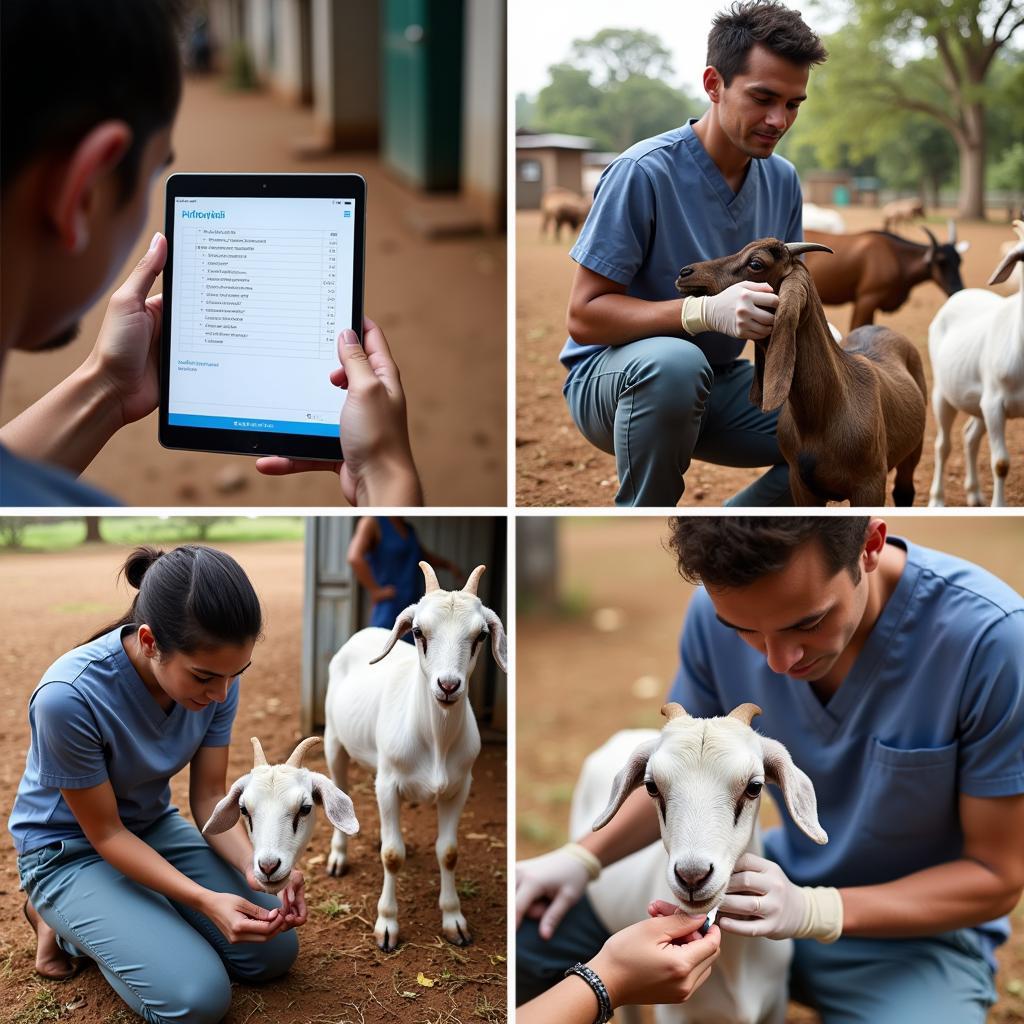African Folk Art and Recycling: Transforming Trash into Treasure
African Folk Art And Recycling have a deep and intertwined history. For centuries, resourceful artists across the continent have transformed discarded materials into objects of beauty and cultural significance. This practice not only showcases incredible creativity but also reflects a deep respect for the environment and a commitment to sustainable living. From vibrant masks crafted from scrap metal to intricate baskets woven from discarded plastic, African folk art demonstrates the power of transforming trash into treasure.
See how discarded materials find new life in the hands of talented artisans. From bottle caps to tin cans, everything is repurposed into stunning works of art. Learn how this practice connects to ancient traditions while addressing contemporary environmental concerns. african dolls using newspaper
The Resourceful Spirit of African Recycling
Recycling isn’t a new concept in Africa. Long before the global recycling movement gained momentum, African communities were practicing resourceful reuse, driven by both necessity and a deep understanding of the interconnectedness of life and nature. This tradition is deeply embedded in the cultural fabric of many societies, where discarded items are not seen as waste but rather as potential resources waiting to be reimagined. This resourcefulness is reflected in various art forms, from weaving and pottery to sculpture and mask making.
What materials are commonly used in African folk art recycling? Common materials include scrap metal, plastic bags, bottle caps, old newspapers, fabric scraps, and even discarded tires. The possibilities are truly endless.
African Folk Art: More Than Just Aesthetics
African folk art is far more than just decorative objects; it carries deep cultural and spiritual significance. These art forms often play a vital role in traditional ceremonies, rituals, storytelling, and everyday life. By incorporating recycled materials, artists not only demonstrate their ingenuity but also imbue their creations with a powerful message about the importance of resourcefulness and sustainability. The act of transforming discarded items into art becomes a symbolic act of renewal and rebirth, reflecting the cyclical nature of life.
How does recycling contribute to the cultural significance of African folk art? Recycling adds another layer of meaning to the artwork, connecting it to the community’s values of resourcefulness, sustainability, and respect for the environment.
Contemporary African Art and the Global Stage
Today, African folk art and recycling are gaining increasing recognition on the global stage. Contemporary artists are pushing the boundaries of traditional techniques, experimenting with new materials and incorporating modern themes into their work. This has led to a vibrant and evolving art scene that continues to inspire and challenge perceptions. Many artists are actively addressing contemporary issues such as environmental degradation, social injustice, and globalization through their art, using recycled materials as a powerful medium to convey their messages.
What impact is contemporary African art having on the global art scene? Contemporary African art is challenging traditional notions of art and bringing new perspectives to the global stage, highlighting the continent’s rich cultural heritage and innovative spirit.
Supporting Sustainable Practices through Art
By purchasing and appreciating African folk art made from recycled materials, we can support sustainable practices and empower local communities. This not only helps preserve cultural traditions but also encourages environmental consciousness and responsible consumption. Furthermore, supporting these artists helps to create economic opportunities and fosters a sense of pride and ownership within communities.
How can we support African artists and sustainable practices? By purchasing their art, promoting their work, and raising awareness about the importance of sustainable art practices, we can contribute to the preservation of cultural heritage and the protection of the environment.
Conclusion: A Legacy of Innovation and Sustainability
African folk art and recycling represent a powerful combination of tradition and innovation. By transforming discarded materials into objects of beauty and cultural significance, African artists are not only preserving their heritage but also offering a valuable lesson to the world about the importance of sustainability and resourcefulness. Let us continue to celebrate and support these artists who are transforming trash into treasure and inspiring a more sustainable future. African folk art and recycling are a testament to the enduring human spirit of creativity and resilience.
FAQ
-
What is the significance of recycling in African folk art?
Recycling in African folk art is not merely a practical consideration but a reflection of cultural values, resourcefulness, and a deep connection to the environment. -
What are some common materials used in African folk art recycling?
Common materials include scrap metal, plastic bags, bottle caps, old newspapers, fabric scraps, and discarded tires. -
How does African folk art address contemporary issues?
Contemporary African artists often use recycled materials to address issues like environmental degradation, social injustice, and globalization, conveying powerful messages through their art. -
How can I support African artists and sustainable practices?
You can support them by purchasing their art, promoting their work, and raising awareness about the importance of sustainable art practices. -
Where can I find more information about African folk art and recycling?
You can explore online resources, visit museums and galleries, and connect with organizations that promote African art and culture. -
What are some examples of traditional African art forms that incorporate recycled materials?
Examples include masks, sculptures, baskets, textiles, and jewelry made from various discarded materials. -
How does African folk art contribute to cultural preservation?
African folk art serves as a powerful vehicle for preserving cultural traditions, stories, and values, passing them down through generations.
Suggested Further Reading and Questions
Explore other articles on our website related to African art, culture, and sustainability. You may also be interested in learning more about:
- The history and evolution of specific African art forms
- The role of art in African societies
- The impact of globalization on African art and culture
- The growing movement of sustainable art practices worldwide
Contact Us
For any assistance or further inquiries, please contact us:
Phone: +255768904061
Email: kaka.mag@gmail.com
Address: Mbarali DC Mawindi, Kangaga, Tanzania
Our customer service team is available 24/7.

